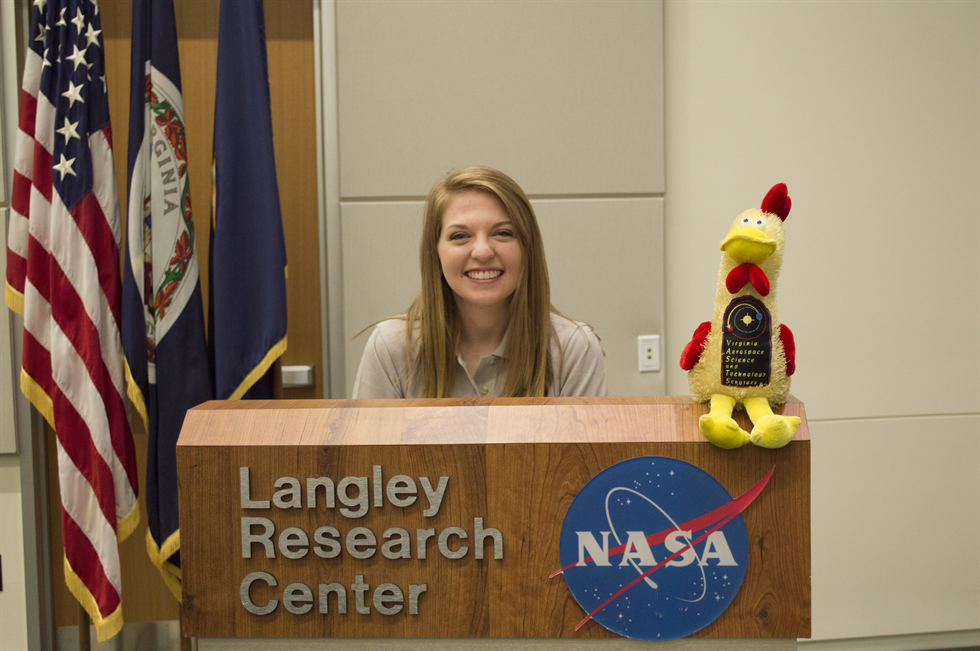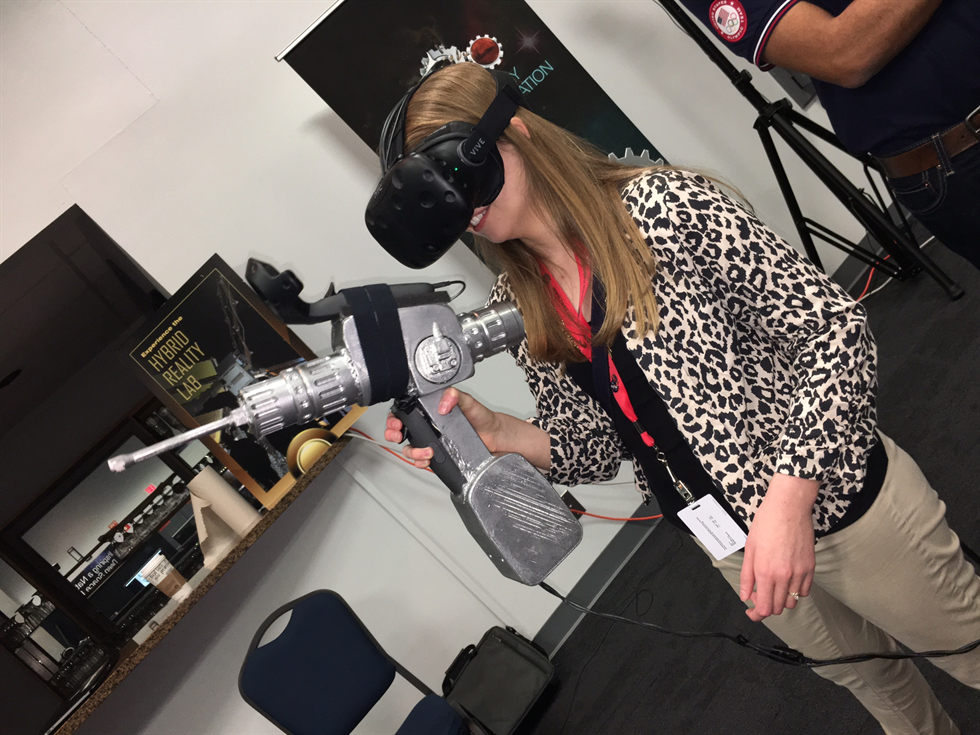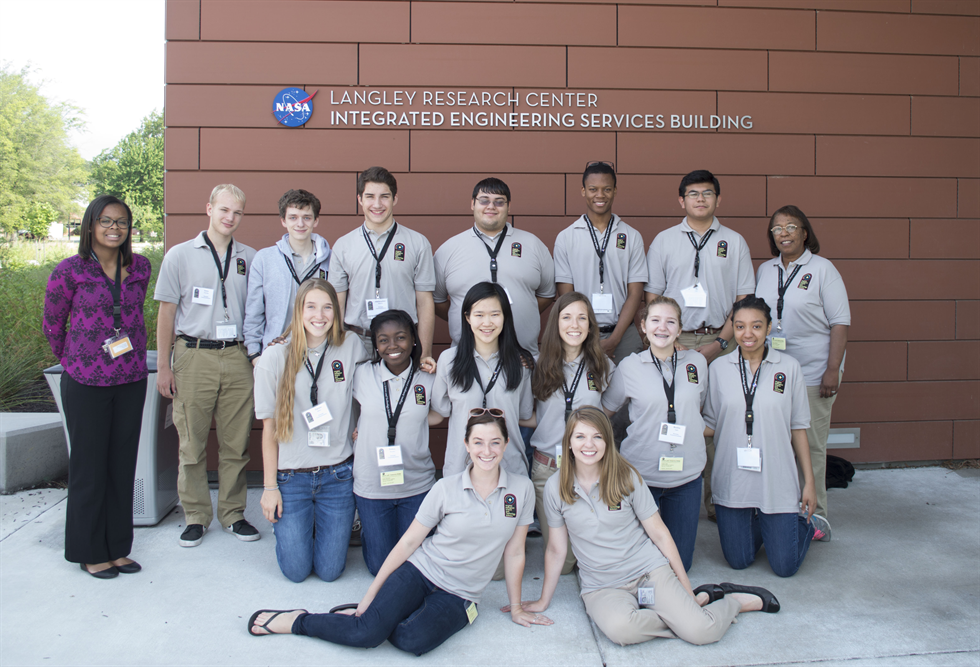Brooke Nelson: The art of designing NASA’s mission
Brooke Nelson grew up in a small, rural town with few connections to science, technology, engineering or math (STEM) resources. Though Nelson always had an interest in space, these conditions made it difficult to be engaged in STEM. But one day, she found a flyer to the Virginia Aerospace Science and Technology Scholars (VASTS) program. Nelson thought she should apply, and she’s glad she did. After her acceptance, she was off to NASA’s Langley Research Center, planning a theoretical human mission to Mars.
Once Nelson was at Virginia Tech, she was accepted into their engineering program. However, she switched her major to graphic design after the first semester.
“I loved the visualization and creative aspects of engineering, [but] I just wasn’t too keen on the technical side,” Nelson said. “Design is the one thing that makes me excited to get out of bed each morning.”
Nelson felt discouraged, thinking that she probably wouldn’t be able to fulfill her dream of working at NASA if she stuck with her graphic design degree. Little did she know—she would find a home there after all.
Nelson reached out to graphic designers at multiple NASA centers to take tours and learn more about what she could do with her degree.
“I arranged for a tour and got to see what being a NASA designer really looks like,” Nelson said.
She also met some amazing people and handled equipment that had flown in space.
“I ended up being led around Goddard Space Flight Center by Dr. Neil Gehrels, principal investigator and astrophysicist for the Swift Gamma Ray Burst mission,” Nelson said. “I had the opportunity to touch a piece of a thermal blanket that was in space and to witness the James Webb [Space] Telescope being worked on. It was priceless.”
Nelson’s story came full circle in 2015 when she returned to Langley not as a student, but as an intern for the VASTS Strategic Communications team, where graphics played a big role in her project. She co-mentored a group of high school students on the Strategic Communications team. The students were responsible for writing press releases, creating educational material, designing a mission patch and producing an inspirational video. This sparked Nelson’s interest even more and helped her realize that she had a home at NASA, even though her degree wasn’t in STEM or business.
“My internship at Langley pulled back the curtains in order for me to understand that there are specific people responsible for creating graphics and artistic material used by NASA for promoting programs,” Nelson said. This spring, her journey continued with an internship at NASA’s Johnson Space Center in Houston.
At Johnson, Nelson performs work that keeps the public aware of NASA’s inspirational mission.
“I get to work on a lot of really neat things,” Nelson said. “I had the opportunity to be immersed in the Super Bowl production as the exhibits were being set up, and I’m getting to experience some of the newest technologies. Right now, I’m helping produce a virtual reality recruitment tool that will allow the public to see what it’s like to work at NASA.”
One of Nelson’s main responsibilities is to redesign graphic elements for the International Space Station (ISS) exhibit at Space Center Houston. Her main goal is for people to walk away understanding its key messages: partnerships, the commercial space market, contributions to deep space exploration and the fact that the space station is a working, national laboratory.
Nelson’s mentor, Jack Moore, speaks highly of Nelson and her work at Johnson.
“From presenting research findings in ISS leadership meetings to coordinating and organizing a virtual reality video production for SXSW, Brooke’s list of accomplishments this semester is impressive,” Moore said. “She has brought more than exceptional design talent to the NASA exhibits team; she is innovating a new a process for goal-driven activations. Her internship project lays the groundwork for a new exhibit design strategy that includes user surveys, stakeholder interviews and industry best-practice research, all in an effort to drive home key messages that advance human exploration.”
Nelson’s degree choice didn’t lessen her love for space exploration or stop her from searching for NASA internships where she could contribute her talents.
“I simply want to inspire potential interns that are like me,” Nelson said. “I want them to know that it’s possible to catch dreams if you chase them hard and long enough.”
To read more stories about NASA interns like Nelson, visit the Intern Stories website: https://www.nasa.gov/education/interns/index.html
What can an intern do for your project? To learn more and request an intern for fall 2017, click here.
Alice Beatty
NASA Johnson Space Center Internship Program










